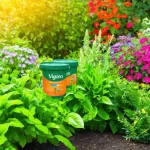Floral hydrangeas, also known for their stunning blooms, offer a captivating beauty to any garden or floral arrangement. These perennial plants, renowned for their large flower heads and lush foliage, are a favorite among gardeners and floral enthusiasts. With a range of colors and varieties, floral hydrangeas can transform any landscape, providing a burst of color from summer through fall.
Understanding Hydrangeas
Floral hydrangeas belong to the genus Hydrangea, which comprises approximately 75 species. These plants are native to various regions, including Asia and the Americas. They are universally adored for their large, vibrant flower clusters, which come in various shapes and sizes.
Popular Varieties of Floral Hydrangeas
Hydrangeas can be categorized into several popular varieties, each offering unique characteristics. Here’s a breakdown of some of the most sought-after types:
| Hydrangea Variety | Description | Flower Colors | Growing Conditions |
|---|---|---|---|
| hydrangea macrophylla | Also known as bigleaf hydrangea, these feature large, round flower heads. | Pink, blue, purple, white | Prefers partial shade, moist soil |
| Hydrangea paniculata | Known for its conical flower clusters; blooms on new wood. | White, pink, red | Sun to partial shade, well-drained soil |
| Hydrangea arborescens | Commonly known as smooth hydrangea; typically hardier than Others. | White, green | Full sun, adaptable to various soils |
| Hydrangea serrata | Also referred to as mountain hydrangea; smaller and more compact. | Blue, pink, white | Prefers partial shade, well-drained soil |
Color Variations of Hydrangeas
One of the unique qualities of hydrangeas is their ability to change color based on the soil’s pH level. For instance:
- Acidic Soils (pH below 5.5): Hydrangeas absorb more aluminum, leading to blue flowers.
- Neutral to Alkaline Soils (pH above 6.5): Results in pink flowers due to less aluminum absorption.
| Soil pH Level | Flower Color |
|---|---|
| Below 5.5 | Blue |
| 5.5 – 6.5 | Purple |
| Above 6.5 | Pink |
For more information on hydrangea color changes based on soil pH, the Monrovia Hydrangea Care Guide offers helpful insights.
Planting and Caring for Floral Hydrangeas
Ideal Location
Choose a location that receives ample sunlight, specifically for panicle and smooth hydrangeas. Others, like bigleaf hydrangeas, thrive best in partial shade.
Soil Preparation
Hydrangeas prefer moist, well-draining soil rich in organic matter. Here are some important tips for soil preparation:
- Test Soil pH: Use a soil testing kit to determine the pH level.
- Amend Soil: Based on the results, add sulfur for acidity or lime for alkalinity.
- Organic Matter: Incorporate compost or well-rotted manure to improve soil structure.
Watering Schedule
Hydrangeas require consistent moisture, especially during dry spells. Here are some watering tips:
- Frequency: Water at least once a week, increasing frequency during hot and dry periods.
- Method: Soak the soil around the plant but avoid overhead watering to reduce disease risk.
Fertilizing Hydrangeas
Healthy growth requires the right nutrients. Consider these fertilization practices:
- Type of Fertilizer: Use a balanced fertilizer with equal parts nitrogen, phosphorus, and potassium (NPK).
- Timing: Fertilize in early spring and again in mid-summer for continuous blooming.
Pruning Hydrangeas
Pruning is essential for shaping and promoting better blooms. Depending on the variety, pruning techniques may differ:
- Bigleaf Hydrangeas: Prune immediately after flowering to avoid cutting off next year’s buds.
- Panicle and Smooth Hydrangeas: Prune in late winter or early spring when dormant to encourage new growth.
| Hydrangea Variety | Pruning Time | Pruning Technique |
|---|---|---|
| Hydrangea macrophylla | After flowering | Deadhead spent blooms; shape lightly |
| Hydrangea paniculata | Late winter/early spring | Cut back to shape and encourage blooms |
| Hydrangea arborescens | Late winter/early spring | Prune back to 12 inches for fuller growth |
Common Pests and Diseases
Floral hydrangeas may fall prey to a range of pests and diseases. Here are some common issues to watch for:
- Pests: Aphids, spider mites, and whiteflies can infest hydrangeas.
- Diseases: Fungal infections like powdery mildew, root rot, or leaf spot.
| Issue | Symptoms | Treatment |
|---|---|---|
| Aphids | Curling leaves, sticky residue | Insecticidal soap or neem oil |
| Powdery Mildew | White powder on leaves | Maintain airflow; use fungicides |
| Root Rot | Wilting and yellowing stems | Improve drainage; avoid overwatering |
Troubleshooting Hydrangea Problems
If your hydrangeas are not blooming, here are some common reasons:
- Planting Depth: Ensure they are planted at the appropriate depth.
- Improper Pruning: Know the right time to prune based on the variety.
- Soil Quality: Check for nutrient deficiencies affecting blooming.
Frequently Asked Questions
1. why are my hydrangeas not blooming?
The reason might be due to improper pruning. Different hydrangea varieties bloom on old or new wood, so it is crucial to know the right time to prune.
2. Can I grow hydrangeas in pots?
Yes, hydrangeas can thrive in pots! Ensure you choose a large enough pot and use high-quality, well-draining potting soil.
3. How often should I fertilize my hydrangeas?
Fertilize twice a year—once in early spring and again in mid-summer—to promote healthy blooms.
4. Are hydrangeas drought-tolerant?
Hydrangeas prefer consistent moisture and do not typically thrive in drought conditions, although some varieties are more resilient than others.
5. Can I change the color of my hydrangeas?
Yes, you can manipulate the color of your hydrangeas by adjusting the soil’s pH. Use sulfur or lime to achieve your desired hue.
By following these guidelines, you can successfully cultivate floral hydrangeas that will brighten up any garden with their enchanting blooms.
